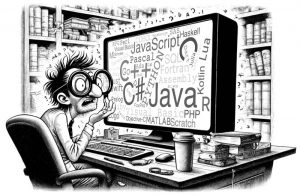Is it possible to come up with truly innovative ideas when you’re not part of the institutions where the expertise resides?
According to one study, the answer would seem to be “No.” The book, The Sociology of Philosophies by Randall Collins, makes a case for how great ideas through history have always developed, almost without fail, in connection with the expert community.
Organizations, institutions and even loose associations of individuals can possess tacit knowledge giving a competitive moat that is hard for outsiders to cross. This may include explicit trade secrets and technical facts, but also certain thought styles, rules of thumb, recipes, etc., that reside only in the minds of the participants.
Sometimes these thought styles are more important than the bare facts themselves. In a recent interview, Terence Tao commented that sometimes his most appreciated lectures are those in which he makes a mistake and must show his thought process in real time for how he fixes the problem. By learning, not just what the solution is but how to approach the problem, one can be enabled to solve many problems, not just one.
Sometimes such learning occurs when a corporation or other institution imprints its attitudes, thought styles and mental habits onto its members over a period of time.
The book Sociology of Philosophies, however, may have a fatal flaw. In determining what is a great idea, the book, perhaps circularly, relies on the authority of what institutions say is a great idea—thus potentially arriving at the conclusion as a tautology. Diffusion of ideas may be a better tool for looking at the problem, by looking at societal impact rather than just elite opinion.
An opposite idea is the notion of maverick science—knowledge developed outside of the institutions, often ridiculed and sometimes vindicated. Some ideas like open source software were developed from a purposely anti-institutional perspective (thus spawning a new community of its own). Maverick thinking may be more important now than ever, as many institutions have become moribund (for perspectives see here and here).
Opportunities for the maverick may be better now than ever. For one, the Internet, and particularly the prevalence of online talks and lectures, a trend accelerated during Covid, make expert knowledge more accessible than ever. Second, AI chatbots now allow you to ask questions of this content, playing something of a mentoring role. It’s a better time than ever for institutional outsiders to do worthwhile things.






